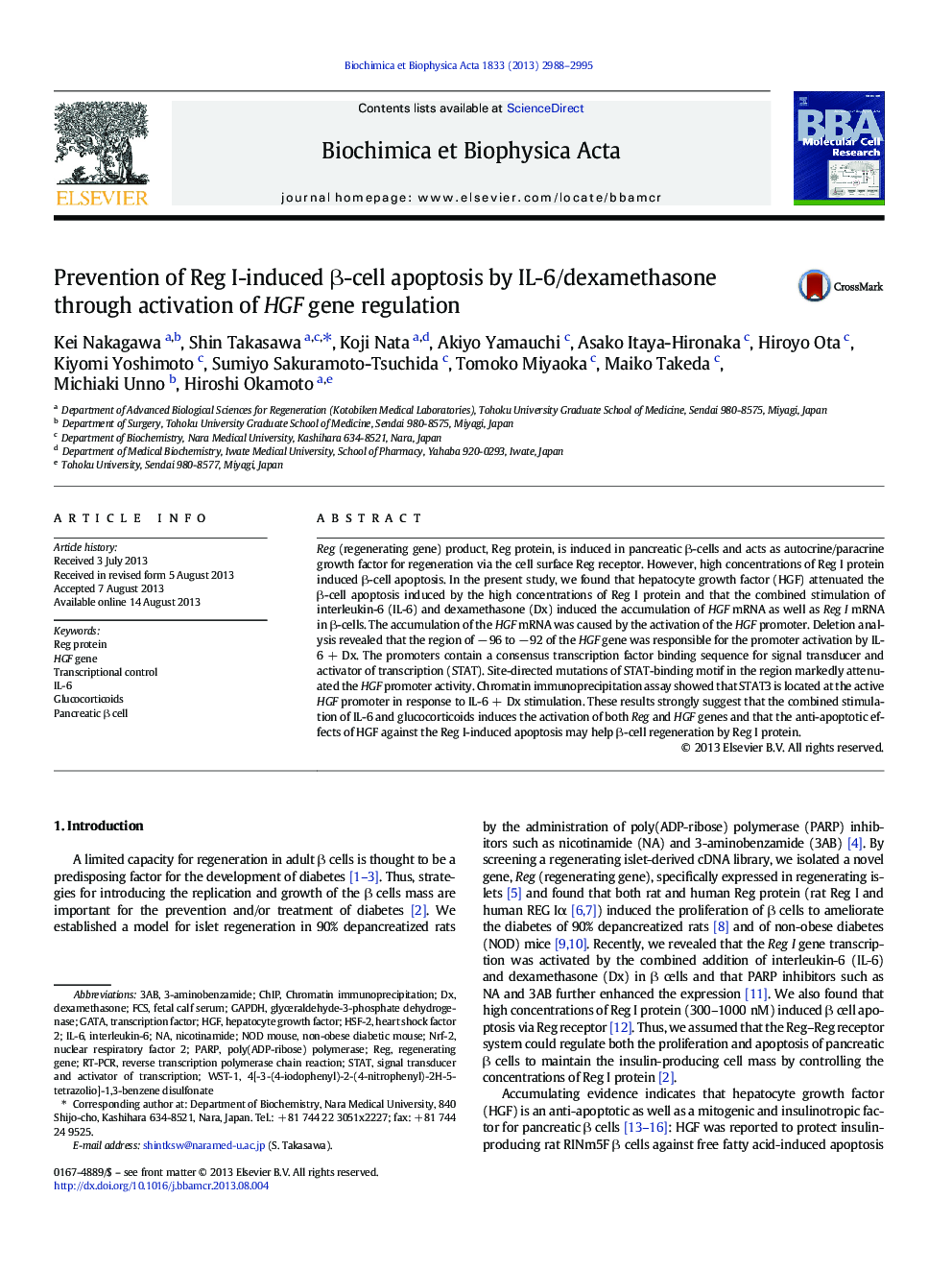| Article ID | Journal | Published Year | Pages | File Type |
|---|---|---|---|---|
| 8303904 | Biochimica et Biophysica Acta (BBA) - Molecular Cell Research | 2013 | 8 Pages |
Abstract
Reg (regenerating gene) product, Reg protein, is induced in pancreatic β-cells and acts as autocrine/paracrine growth factor for regeneration via the cell surface Reg receptor. However, high concentrations of Reg I protein induced β-cell apoptosis. In the present study, we found that hepatocyte growth factor (HGF) attenuated the β-cell apoptosis induced by the high concentrations of Reg I protein and that the combined stimulation of interleukin-6 (IL-6) and dexamethasone (Dx) induced the accumulation of HGF mRNA as well as Reg I mRNA in β-cells. The accumulation of the HGF mRNA was caused by the activation of the HGF promoter. Deletion analysis revealed that the region of â 96 to â 92 of the HGF gene was responsible for the promoter activation by IL-6 + Dx. The promoters contain a consensus transcription factor binding sequence for signal transducer and activator of transcription (STAT). Site-directed mutations of STAT-binding motif in the region markedly attenuated the HGF promoter activity. Chromatin immunoprecipitation assay showed that STAT3 is located at the active HGF promoter in response to IL-6 + Dx stimulation. These results strongly suggest that the combined stimulation of IL-6 and glucocorticoids induces the activation of both Reg and HGF genes and that the anti-apoptotic effects of HGF against the Reg I-induced apoptosis may help β-cell regeneration by Reg I protein.
Keywords
3ABIL-6GAPDHHGFRT-PCRPARPWST-1FCSNRF-23-AminobenzamideGATASTATchromatin immunoprecipitationinterleukin-6Dexamethasoneregfetal calf serumPancreatic β cellnuclear respiratory factor 2Hepatocyte growth factorTranscription factorSignal transducer and activator of transcriptionNOD mousenon-obese diabetic mouseNicotinamidereverse transcription polymerase chain reactionPoly(ADP-ribose) polymeraseCHiPRegenerating geneTranscriptional controlGlucocorticoidsglyceraldehyde-3-phosphate dehydrogenase
Related Topics
Life Sciences
Biochemistry, Genetics and Molecular Biology
Biochemistry
Authors
Kei Nakagawa, Shin Takasawa, Koji Nata, Akiyo Yamauchi, Asako Itaya-Hironaka, Hiroyo Ota, Kiyomi Yoshimoto, Sumiyo Sakuramoto-Tsuchida, Tomoko Miyaoka, Maiko Takeda, Michiaki Unno, Hiroshi Okamoto,
